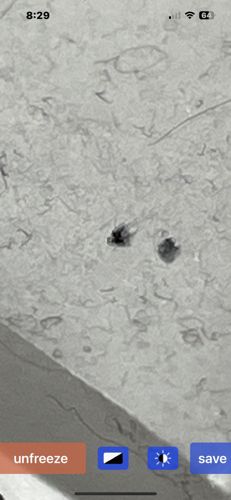Sooty Mold / Mildew (not an insect)
Scientific Name: Various species of fungi, often within the class Dothideomycetes, that produce dark, soot-like mycelial growth.
Order & Family: Order: Capnodiales (or other orders of Dothideomycetes); Family: Various families within the 'sooty mold' group (e.g., Capnodiaceae, Euantennariaceae). This is a broad group of fungi, not a single species or family.
Size: Not applicable as it's a fungal growth, which spreads across a surface. Individual fungal hyphae are microscopic, but the colonies can cover areas from a few millimeters to several centimeters or more.

Natural Habitat
Damp and humid environments, often seen on outdoor surfaces like walls, plants, or objects where honeydew or other sugary substances are present. Can also occur indoors in areas with high humidity and poor ventilation.
Diet & Feeding
Not applicable, as this is a fungus. It feeds on honeydew secreted by sap-sucking insects (like aphids or scale insects) or other sugary exudates from plants. It does not directly harm the plant but can inhibit photosynthesis by blocking sunlight.
Behavior Patterns
They are typically active during the damp winter months, moving slowly across surfaces. They are often found in groups. The 'fuzz' or 'dust' is actually a growth of mold or fungi that the bug is feeding on, rather than the insect itself being 'dusty'. In this image, it appears what might be seen as the 'bug' is likely a cluster of sooty mold or mildew which are common in damp environments. There are no readily identifiable insect features in the provided image.
Risks & Benefits
Risks: Mainly aesthetic, making surfaces or plants look dirty. On plants, it can block sunlight, reducing photosynthesis. Can be an indicator of a primary insect infestation (e.g., aphids, scale insects) that are secreting honeydew. Benefits: None directly, though they can break down organic matter. They are generally harmless to humans, but breathing in large amounts of mold spores can cause respiratory irritation in sensitive individuals.
Identified on: 8/29/2025